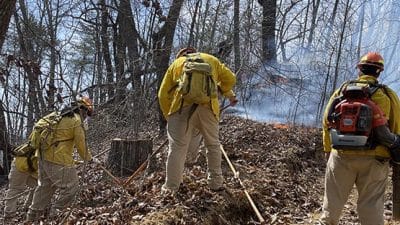
By culturing and sequencing the DNA of naturally occurring bacteria living on the skin of four amphibian species in Virginia, Virginia Tech researchers found samples that could be useful for developing probiotic treatments for amphibians.
“There is a lot of interest in using these beneficial bacteria as probiotics to protect amphibians from disease,” said Jeni Walke, a postdoctoral researcher at Virginia Tech. “As with many applications of microbiology, using probiotics requires having bacteria that can be grown in the laboratory and then, in this case, applied to amphibians.”
Specifically, Walke and her team found distinct microbial communities across amphibian species with many of the dominant bacteria represented by cultures, some of which are known to contribute to disease resistance in hosts. Some species of skin bacteria produce antifungals, which, with the help of scientists, can be developed into chytrid fungus-fighting probiotics. The results were published in the journal Applied and Environmental Microbiology.
Chytrid fungus causes a disease called chytridiomycosis, which is rapidly spreading across the world and already threatens about 500 amphibian species. The disease disrupts amphibian skin, potentially resulting in death.
Scientists believe chytrid fungus may be the greatest disease-caused loss of biodiversity in recorded history. Many factors are at play, including amphibian behavior, biological defenses, and environmental conditions. Human-driven changes such as climate change, invasive species, pollution, and habitat degradation further complicate the problem.
Walke works in the laboratory of Lisa Belden, an associate professor of biological sciences in the College of Science, a Fralin Life Science Institute affiliate, and a Global Change Center affiliate. Belden’s team is interested in how a frog’s skin microbiome, or the collection of bacteria on its skin, helps it survive chytrid fungus exposure.
“A chytrid fungus is responsible for many amphibian population declines and extinctions across the world, which is likely the greatest disease-associated loss of biodiversity in recorded history,” Belden said. “While many declines from this fungus have occurred in tropical frogs, a new chytrid fungus has been identified in Europe that infects and kills salamanders. As we live in the global hotspot for salamander diversity, we hope our probiotic research on local amphibians will be far enough along to be useful once that fungus arrives in the U.S.”










